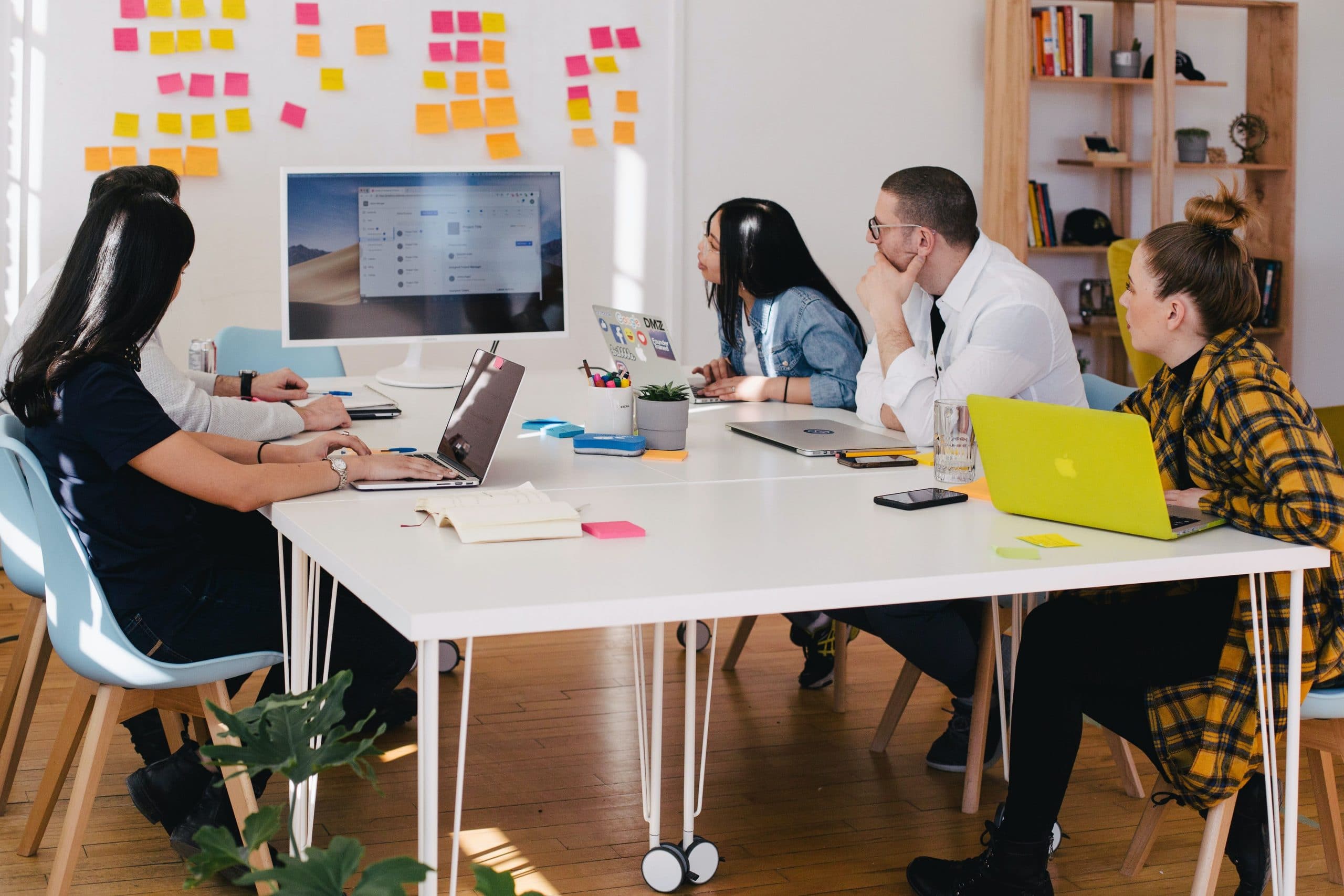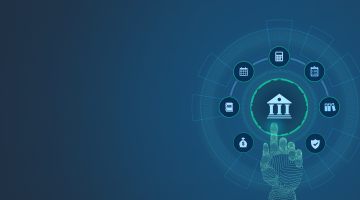

Solutions to top 5 software development challenges
Due to the full penetration of digitalization into an ever-widening circle of spheres, the high-tech field has developed into a major locomotive propelling the across-the-board advent of technological progress into our life. Today, the IT industry is a vibrant realm experiencing steady growth that opens appealing developmental and financial vistas. Yet, in the highly dynamic, challenging, and competitive world of the early third millennium, the IT sector stakeholders face numerous common problems in software development while trying to live up to digital product consumers’ expectations.
The increasing complexity of tasks, the volatility of global and national market landscapes, swift obsolescence and depreciation of both soft- and hardware, constant updating of technique and tool lists utilized in the industry, and the drive for shortening the product development cycle are only a few hitches encountered by an average developer.
Being a seasoned player on the digital product market, DICEUS knows that the above-mentioned issues are universal nuisances commonly afflicting all actors on the IT stage. But when it comes to implementing a specific project, the team working on it typically faces many challenges in software development atop of the universal ones that must be overcome to eventually deliver a high-quality product. So, what are 5 common problems in the software development process?
Top 5 challenges facing software development
In the ideal world, developing software is an orderly linear process that progresses from stage to stage and ultimately yields a desirable outcome presented to the customer within the stipulated period. In real-life, a project may get stalled indefinitely while the team spends (or wastes?) too much time on an unexpected problem, has to return to the same phrase that wasn’t handled properly, or misses deadlines trying to identify and fix slews of bugs.
Eye-wise managers tend to attribute such software development problems to the inefficiency and poor commitment of the dev teams, but it would be a rash and shallow conclusion indeed. As often as not, developers are only partially responsible for the inability of the company to cope with problems in software development, while it is the executives who are mostly to blame if something goes wrong.
Having stocked considerable experience of dealing with software projects in various industries, we at DICEUS have figured out 5 common problems in the software development process that the majority of IT companies fail to come to grips with.
Inadequate product development planning

This challenge is a serious pitfall often encountered by startups that make initial steps in the field and develop their first software product. Budding companies tend to underestimate the importance of meticulous preliminary preparation and overestimate their strength, biting more than they can chew. The attitude of “c’mon guys, that’s a piece of cake, let’s go at it hammer and tongs and finish it in a couple of days” doesn’t bode well for the project’s success. As a result, the venture bogs down in chaotic and wasteful efforts, hardly reaching the first milestone, to say nothing of completing it.
Solution
Before your team develops a software product, a thorough and detailed roadmap of the future project must be devised. It should contain product specifications and scope, the budget to be allocated for it, final product quality expectations, technologies and resources needed for implementation, possible risks and their mitigation strategy, communication procedure, and project schedule with the completion timeline.
Of course, sticking to the plan at whatever cost is out of the question since any project needs fine-tuning or sometimes even serious overhauling. A clear and well-defined vision of the product concept and its sober estimation is essential for realizing what expertise will be necessary and starting the building phase.
Vague or changeable requirements

If you think that you can get a viable solution going by a general outline of what the customer wants to see in the commissioned product, the project is doomed to defeat. Or at least to lengthy and often fruitless trial-and-error style attempts to divine what the customer meant. However absurd it may sound, such a modus operandi isn’t alien to development teams, since in 2016, over a third of them ranked vague requirements among the top common problems in software development.
At the same time, underspecification is as harmful as over-specification. Thousands of requirements devised for complex projects may be bewildering at least or contradict each other at worst. As a result, the devs contact the consumer on every little pain point (which slows down the progress immensely) or act at their discretion, risking performing major revamping now and then.
Another requirement-related woe is the customer’s frequent changes of mind that cause alteration in the code and sometimes in the entire concept. Alongside the waste of time and budget, constant revisions and modifications increase the possibility of errors and bugs that can creep in.
Learn how change request management works in the article written by our expert.
Solution
Before you set to work, the team must realize what they are building, what the future product’s target audience is, and how the customer sees it. So, it should all start with a meticulous business analysis and establishing a robust communication line with the consumer, whose vision of the product should be clearly shaped.
After that, a concise and well-articulated document must be drawn where all functional and non-functional requirements are to be stipulated, all of them should be aligned with expectations, a set of goals should be formulated, and a prototype developed. All of this must be done with the end user’s needs in view where UX is to become a top priority.
Following the requirements plan, be ready to introduce changes since market and technical environments are liable to fluctuate. Being thus challenged, consider this necessity to react to game-changing factors not as a nuisance but rather as a chance to test your flexibility and resilience – crucial adaptation assets every software company must have.
Technology stack issues

The product plan has been approved, the requirements clarified. Does it seem that nothing can hamper the success of the project? Wrong. Now the development team has to address technical challenges in software development. Conventionally, such challenges are of three kinds.
The first is to identify what should be included in the technological stack necessary to perform the task. This decision must be entrusted to professionals in the field who know best what tools, libraries, and frameworks are the best fit to handle the specific job.
The second is to make sure the commissioned product integrates well with the legacy software employed by the customer. Again, you will need a professional eye.
The third is to keep abreast of the latest developments in the IT domain to add value to the implementation process. The pace of technological progress in the digital sphere is so rapid that tracking all novelties is hard even for seasoned experts, to say nothing of proselytes abounding in startups.
However, jumping at any shiny state-of-the-art know-how in the hope that every fresh achievement is what the doctor ordered for your task is even worse than lagging behind on useful technologies of recent make. This decision can set at naught efforts spent to combat the previous two challenges and bring about many problems in its wake, starting with the lack of skills to use the novel technology and ending with the risks of utilizing unreliable tools.
Solution
To kill these three birds with one stone, enlist the assistance of connoisseurs. DICEUS provides a whole gamut of consultation services and can help you with the right choice of scalable tech stack that conforms to the industry standards and will dovetail perfectly into the requirements of your particular project. Thus, you will avoid the necessity of looking for a suitable tech stack on the hoof when the project is well underway, but the previously chosen set has proved inadequate.
Staff recruitment and churn

All the steps taken to address the above-mentioned challenges in software development projects may be rendered vain if the development team isn’t up to the job. It sometimes happens that the crew members assigned to a particular task lack expertise to tackle it, you have failed to find an expert to do it, or your set of employees changes so often that training rookies drains efforts and time that should have been spent on the implementation of the project. Or your software department is just understaffed, which in the conditions of the global pandemic is not that uncommon.
Solution
The universal recipe to solve employee issues is outsourcing. The globalization drive enhanced with ubiquitous digitalization enables customers in the 21st century to get access to a vast pool of talented IT experts from various corners of the world that provide high-quality software development services at a reasonable price. Such companies offer both dedicated teams to handle the project on a turnkey basis and staff augmentation services to hire the very specialist that the in-house team lacks.
Being a perfect solution, outsourcing must be approached very carefully, though, in order to enlist proficient experts with a necessary set of skills and not splurge on it excessive sums. While choosing one, it is important to make sure the outsourcers are headed by a mature technical leader who can manage the whole team and nip emerging conflicts within it in the bud.
Inefficient project management

Project management problems and solutions to them are of primary importance to see the product development through. Distributing responsibilities within the team, supervising the progress of its members, ensuring all of them are on the same page, and meticulously monitoring the completion of each development stage (and ultimately the whole project) is a job of work that takes experience and leader skills. A good project manager should be able to balance speed and quality of performance and limit multi-tasking to the inevitable minimum. Otherwise, being bombarded by ever-new assignments employees won’t be able to focus on their segment of work.
Project management challenges and solutions are exacerbated when remote disparate outsourcers from various locations and time zones are hired to do the task. Some organizations employ a dedicated project manager who is charged with the ultimate decision-making power and exercises overall control of the progress of the project. This strategy works well only in case the whole team hails from the same country or region where devs have a similar cultural background, close set of values, and common work ethic. But if all of them are dispersed all over the globe, managing such a team is a headache.
Given the team and the manager are locals of the same country, a certain adaptation and fitting-in are still imminent. It is sure to take some time, which tells upon the speed of the project development. And if the two parties to the process don’t see eye to eye with each other, you will have to look either for a new project manager or a new development team.
Solution
To avoid adjustability issues, think end-to-end product development. Once you opt for this approach, look for a dedicated team with the project manager on its roster. (S)he is sure to know the crew’s expertise- and psychology-wise and will deal out the tasks accordingly.
Modern project managers (especially those working in the IT-sphere) can’t do without software tools and the knowledge of Agile methodology that facilitate the development process and allow to obtain a satisfactory outcome, making use of all available resources.
Taking care of lesser challenges
This list of challenges in software development projects is in no way complete, containing only the most acute ones. Yet, there are some other problems to solve.
Joining the efforts of the development and marketing teams
Some CEOs entertain a wrong assumption that marketing strategies should be given thought to when the completed product is in evidence. Yet, the value of the product is determined by how well it caters to the needs of end-users and thus how well it sells. These factors are conditioned not only by the quality of the product but by the current market trends as well.
To avoid possible complaints and pitfalls, a stable communication channel should be maintained between the two parties and devs should be kept in the know of the shifting market environments and users’ tastes. Developers, in their turn, must consult the marketers on the features they want to add to see how the change will align with what the end-user expects from the product.
Handling security issues
In the modern digitalized world, cybersecurity is one of the top concerns for end-users. These concerns grow exponentially in sales, banking, and other IT-powered spheres, where there is a high chance of the personal or financial data of customers being compromised. And it is a responsibility shared between all stakeholders of the software development process to provide utmost safety of the clients’ data and inviolability of their digital devices.
To mitigate cybersecurity risks, developers should employ the best security practices in their work, comply with all security measures required from their product, make penetration testing a rule at all major stages of product development, and keep their workstations secure from unauthorized intrusions.
Conducting regular testing procedures
Sometimes it happens that the development process was thoroughly planned and executed on time in accordance with all requirements. It looks perfect until you try to run the red-hot off the skillet product and realize that it doesn’t work. In this case, you have to revisit each stage of development and try to figure out where the shoe pinches. Huge nuisance, isn’t it?
If you don’t cherish this prospect, remember that, much like penetration testing, quality testing (both controlled and real-life) should be performed on a regular basis, and not just when the development is completed. In this way, you will prevent problems from accruing and forming a messy tangle of troubles that will take ages to unravel.
Correct estimation of development time
Knowing how long it will take to complete a project is crucial for overall planning in general and determining the product’s cost in particular. Of course, you can promise to meet totally unrealistic deadlines hoping that the client will have to put up with the lag of the progress. But such an approach will very soon earn you a bad reputation in the industry. And reputation is the asset that is long in building, quick in ruining, and very hard in remedying.
In the activity controlled by strict deadlines, it is vital to be able to provide the precise estimation of time the specific project will consume. To do that, outline a system of parameters that will enable precise time assessment and make allowance for the unexpected bottlenecks while briefing the client on the duration of the product development.
Conclusion
Being a lucrative business niche, software development is a no-nonsense activity faced by a plethora of challenges, starting with preparing a project plan and ending with marketing a finished product. Astute CEOs of software vendors must be aware of them and devise a consistent strategy of addressing such issues.
Yet, if you want to avoid setbacks and failures on the way to receiving a top-notch product, it is wise to hire a competent outsourcer that will see the project through and deliver high-quality software which won’t make a hole in your pocket but serve as a source of steady revenues for years to come.





